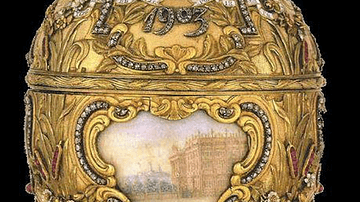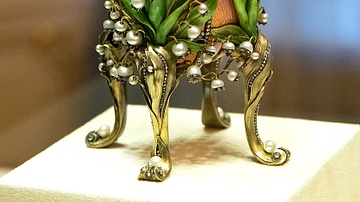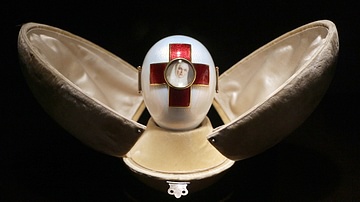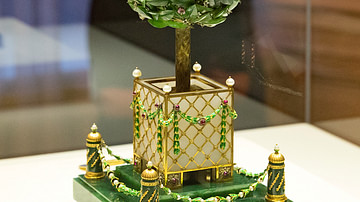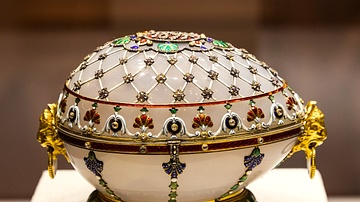Illustration
The 1896 Revolving Miniatures Egg by Peter Carl Fabergé (1846-1920). The egg was given by Tsar Nicholas II (r. 1894-1917) to his wife Alexandra Feodorovna. The egg and base is made of rock crystal with enamel and diamond additions on the base. The upper level of the support shows the empress' monogram before she was married. The egg is topped by an emerald set on a green enamel mount. Inside are 12 miniature revolving paintings with gold frames by the Danish artist Johannes Zehngraff. The paintings show residences held dear by the empress and they rotate when the emerald is pressed down. The egg measures 25.1 cm (9.9 in) in height.
Virginia Museum of Fine Arts, Richmond, USA.
Cite This Work
APA Style
Bedekar, H. (2021, May 03). Revolving Miniatures Egg by Fabergé. World History Encyclopedia. Retrieved from https://www.worldhistory.org/image/13963/revolving-miniatures-egg-by-faberge/
Chicago Style
Bedekar, Hemant. "Revolving Miniatures Egg by Fabergé." World History Encyclopedia. Last modified May 03, 2021. https://www.worldhistory.org/image/13963/revolving-miniatures-egg-by-faberge/.
MLA Style
Bedekar, Hemant. "Revolving Miniatures Egg by Fabergé." World History Encyclopedia. World History Encyclopedia, 03 May 2021, https://www.worldhistory.org/image/13963/revolving-miniatures-egg-by-faberge/. Web. 17 Apr 2025.


